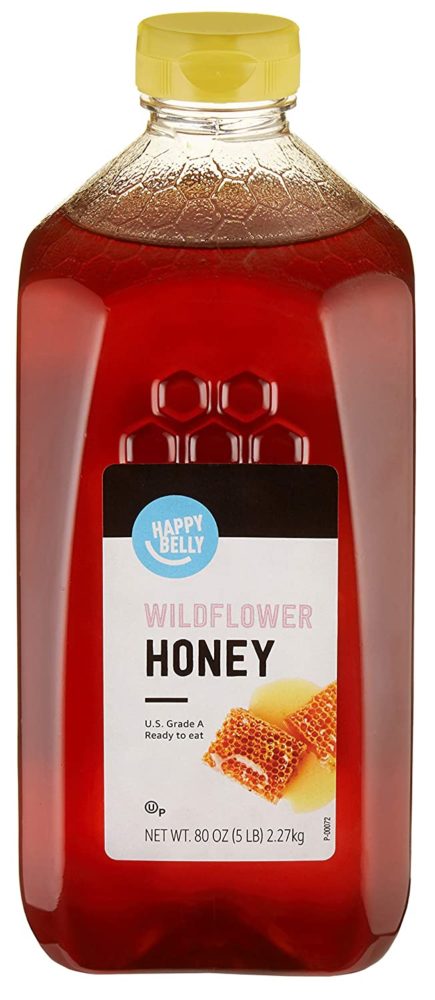It can be argued that life is not worth living without the many joys of living. Invariably, no food is worth eating without sweetness. Sugar is a powerful source of food sweetness; it is the favorite treat for kids and the Achilles heel for older adults.
Brown sugar is produced from sugarcane or sugar beet plants. First, the sugar juice is extracted from the crops, then purified and heated to form molasses (a brown concentrated syrup). This syrup is then centrifuged (made to rotate quickly in a separating machine) to produce sugar crystals. This is where the production process ends for brown sugar; however, white sugar is further processed to remove excess molasses and further disintegrate.
There are two types of brown sugar: natural brown sugar and commercial brown sugar. Natural sugar has been explained above, while commercial sugar is produced by mixing refined white sugar with molasses.
Brown sugar contains a special kind of sugar called sucrose,, and it’s color (light brown or dark brown) comes from the addition of molasses. Brown sugar has a sweet, caramel-like taste and crystal-like texture. The size of brown sugar can vary, depending on the production process.
Honey nutrition facts

Uses of brown sugar
The molasses in brown sugar retains moisture, so using it will result in baked goods that are softer yet denser. This quality has made brown sugar the preferred choice for recipes like cookies, glazes, zucchini bread, sauces, and dense desserts.
Sugar doesn’t only offer its sweetness, it provides the body with energy, and brown sugar especially contains more nutrients like vitamin B1, B2, B3, B6,, and B9, calcium, iron, magnesium, potassium, sodium, and zinc.
Brown sugar recipes
As explained above, brown sugar is used in dishes where moisture and density are of the essence. A few examples of these recipes are:
- Toffee sauce
- Chocolate drip cake
- Soy glazed mackerel with broccoli salad
- Pecan pie
- Auber Gini and mushroom cannelloni
- Prawn toast with sweet chili sauce
- Cookies and cream fudge brownies
- Jamaican beef patties
- Anzac biscuits
Substitute Honey for brown sugar
Brown sugar in all its goodness can become a health nightmare if used in excess. Brown sugar can raise the blood sugar level and cause certain heart diseases. Also, sugar can contribute to the obesity pandemic. For these reasons, there is a need to reduce sugar intake and substitute sugar for another ingredient from time to time.
One perfect substitute for brown sugar is honey. Honey and sugar are both carbohydrates composed primarily of glucose and fructose. Bees (Apis Mellifera) use the nectar they collect from flowers to create honey. The honeybee collects nectar from flowers using its mouth, then some enzymes in the bee’s saliva cause a chemical reaction that turns the nectar into honey, which is deposited into the hive walls.
Honey has a thick, syrupy consistency and is typically consumed in liquid form. Honey can be pale yellow to dark brown or anything in between – this depends on the extraction mode.
Honey contains small amounts of enzymes, amino acids, B vitamins (like brown sugar), vitamin C, minerals, and antioxidants (flavonoids that have anti-inflammatory properties).
Honey is a perfect substitute for brown sugar because it has the same brown hue as brown sugar; therefore, you can still retain the same rich and appetizing brownness brown sugar gives your recipes.
Substitution warnings
Honey is sweeter than brown sugar because it contains more fructose than glucose. As fructose is sweeter than glucose, this makes honey a predominately sweet ingredient. Hence, it is not wise to substitute an equal amount of brown sugar with the same amount of honey. You can use a smaller amount of honey without sacrificing sweetness. The general rule is to substitute 1 cup (0.24 liters) of sugar with about ½ cup of honey.
Honey is made up of 20% water; hence, it is advisable to reduce the liquid volume in the other liquid ingredient in your baking.
Furthermore, because of the high fructose in honey, it caramelizes and burns faster than brown sugar. You should consider lowering the heat and keep a watchful eye to prevent your recipe from turning brown quickly or coming out too brown. It is safe to reduce the temperature of the over by 250F.
Lastly, consider adding baking soda to the recipe (if it doesn’t already call for it). This is because honey is naturally acidic; hence the addition of baking soda helps to balance out the acidity level of your dish.
Frequently asked questions
Is coconut sugar better for you than regular sugar?
Yes, this is another good sugar substitute. Coconut sugar is very similar to regular sugar,, but it is not processed like regular sugar. Also, coconut sugar contains minor amounts of nutrients, like honey.
How do you sweeten oatmeal without sugar?
Oatmeal is traditionally sweetened with sugar. But if you want this cereal without sugar, you can use date syrup, agave nectar, or buckwheat honey. These sugar substitutes give a more nuanced sweetness to your oatmeal.
How much brown sugar is equal to Honey?
It is established that one primary difference between honey and brown sugar is moisture. Hence, to equate these two substances, you should add water or any other form of a liquid called for in the recipe. One cup of honey is equaled to 1 ¼ cups of brown sugar and ¼ cup of water (milk or any other liquid in the recipe can substitute for water).
Conclusion
Brown sugar can add moisture, sweetness,, and density to baked goods, but for health reasons, this sweet ingredient must be watched. As a brown sugar substitute, Honey has the same profile as brown sugar and contains more nutrients. Honey will not change the taste profile of your dish provided you respect the advised measurement in the article. As for color, you do not need to worry; honey will give your dish and baked goods that same attractive brown.


